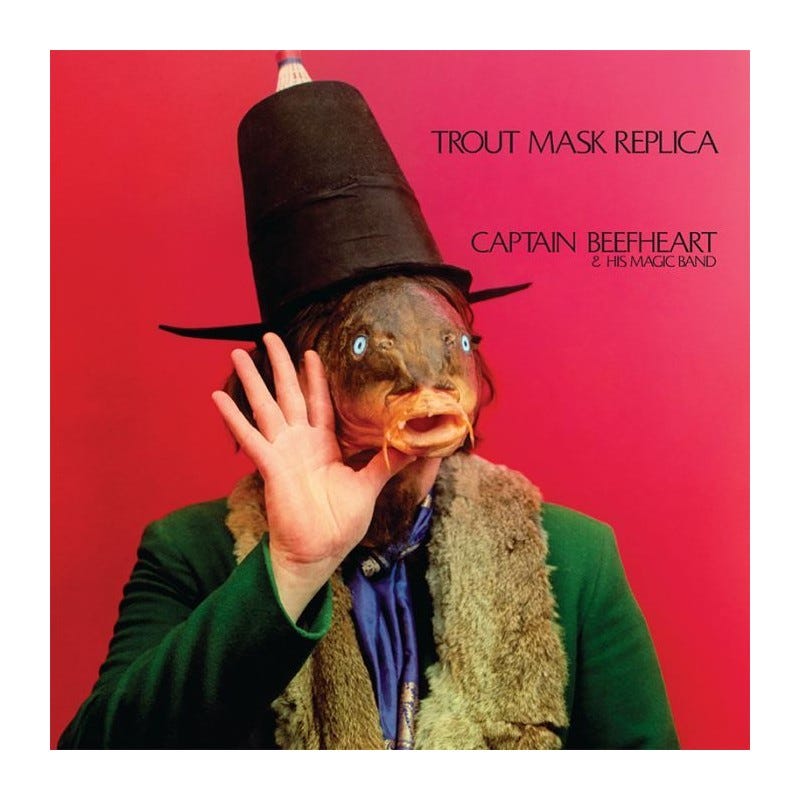Don't
Tell me what to think
(We’re out a day and a few hours late with this, and you’ll have figured out why by the time you see the end of it, if you do.)
We don’t often turn to Washington Post columnist Jennifer Rubin for meat-and-potatoes press criticism. Never, in fact, until today. (And thanks, Dan Quayle, for eternally ruining the word “potato.”)
Rubin has become one of the most vitriolic critics of the Tangerine Tyrant, and his enabling press along with him. She’s still horrid on policy, on the rare occasion when she gets to it, but for years now she’s been pounding on Trump like he was a stringy piece of beef, and today she came as close as a leaner to naming names among the newsies.
Why is it that Sunday news show hosts don’t ask Senate Minority Leader Mitch McConnell (R-Ky.), “Why are you pretending Trump’s document excuses are real?” And why is that when they talk to Trump supporters who spout the “big lie,” the interviewers do not ask them, “You know this is a lie Trump cooked up months before the election, right?” The Kabuki dance in which Trump, his defenders and his supporters are treated as rational (clever even!) is what comes from a media establishment that refuses to discard its need for false balance that it has developed over the course of decades.
The free, independent media is supposed to be the tripwire between disinformation (deliberate distortion) and widespread misinformation (innocent or willfully ignorant regurgitation of lies). Instead, it has been a megaphone for disinformation, upholding the pretense that there are two political parties with equally valid takes on reality.1
For the record, the news show hosts in question are Chuck Todd — who has spawned a noun, chucktodd, signifying a relentlessly dull reporter — at NBC’s venerable Meet the Press, once Dick Cheney’s favorite disinformation vehicle2; George Stephanopoulos and two other chucktodds at ABC’s This Morning; Margaret Brennan at CBS’s Face the Nation; journeyman chucktodds Jake Tapper and Dana Bash on CNN’s State of the Union; and, pointlessly, Shannon Bream, who is named after fishes and accordingly reminds us of a Captain Beefheart album, and who can only aspire upward to chucktoddity, on Fox News Sunday.
None of these people are in what you could call relentless pursuit of Trump, his political enablers, his cultists, or each other. Any of them could both-sides John Wayne Gacy, a prolific serial killer who delighted thousands of children in his guise as a clown.
Political reporters have always policed, and their colleagues have reported within, a narrow range of acceptable discourse. During the post-Red Scare decades, from the late 1950s on, that range included all but the most rabid reactionaries on the right, stopping just to the left of the Birchers, some of whom believed Eisenhower to be a Soviet asset, and Democrats to the border between pragmatic liberals and pie-in-the-sky pinkos.
For a brief spell in the early 1970s, during Nixon’s first term and the first year of his second, universal health care was okay to talk about as a realizable program. Republican Senator Jacob Javits had introduced a bill in April of 1970 that the New York Times described as “Medicare for All,”3 the first appearance of that designation.
By 1973, House Ways and Means Chairman Wilbur Mills had agreed to work on a universal coverage plan with Ted Kennedy in the Senate, and they came close to bringing Nixon on board to a bastardized version of the plan before Watergate took the trickster down, and Mills dissolved into a miasma of alcohol and stripper musk.4
Without Mills and Nixon, Kennedy had nowhere to go. Ford had other problems, Carter wasn’t interested in anything sweeping, and Reagan was a racist reactionary who had strenuously argued for years that Medicare was the vanguard of a socialist takeover.
By the time the Clintons came along, almost 20 years after federally-funded universal health care was last seriously considered, the discourse had retreated from “maybe this is workable” back to “this is socialism/communism” on one end and “we want to work with the industry” on the other.
The press recognized the need to address the high cost and patchy coverage of the existing system — charitably described — but had retreated to previous limits on the discourse because that’s where lobbyists and powerful politicians had pulled them.
The Clinton team organized its reform around competing health care plans that would be under careful supervision to prevent unfair competitive practices such as cherry-picking patients. Consumers choosing among private plans would impose market discipline, restraining costs even as coverage expanded. Consider what a long (neoliberal) way the Democrats had come, from a universal, compulsory government program to a plan for universal coverage made affordable by markets.
Which is how, little more than a decade on from Harry and Louise,5 Clinton became the number two congressional recipient of health care industry donations, trailing only then-Senator Rick Santorum.
Separate analyses by the Center for Responsive Politics, an independent group that tracks campaign finance, and by The New York Times show that Senator Clinton has received $854,462 from the health care industry in 2005-6, a larger amount than any candidate except Senator Santorum, with $977,354. Other industries have opened their wallets to Senator Clinton, a formidable fund-raiser. But none warred with her as the health care industry did.
Contributions to Senator Clinton over the last 18 months include more than $431,000 from doctors and other health care professionals and more than $142,000 from hospitals and nursing homes.6
The “public option,” in which health care “consumers” can choose to buy into Medicare under certain conditions, was the closest thing to universal coverage remaining in Democratic language on the issue in 2008, and again in 2016—”again” because Obama participated in a classic bait-and-switch on that pallid remnant in 2009. The press scoffed at Bernie Sanders and his focus on in equality and Medicare for All in 2016, particularly after Clinton’s Gandalf moment during the primaries.7
Clinton’s “terrible, terrible, national debate” materialized in 2020, with what had become the undeniable popularity of Medicare for All pushing the press into a grudging acknowledgement of the public support and even, in some quarters, dealing seriously (and even, in some quarters, honestly) with the cost and economic ramifications of the plan. That lasted until the surviving candidates coalesced around Biden, and the press, still disconcerted by Sanders and the popularity of his policy proposals, did as well.
We do hold a grudge, yes, but the point is that the press have covered Medicare for all or single-payer generally as a reflection of the state of politics and money rather than as a policy proposal distinct from who supports and who opposes it. And that is what has governed their gate-keeping, their establishment of the accepted range of discourse on that issue and indeed on most issues. What people see in the papers and on TV is dictated by what the most influential politicians, producers and reporters regard as safely within the bounds of the discourse.
One of Ed Murrow’s last acts at CBS was to narrate the “Harvest of Shame” documentary.8 The hour-long 1960 film exposed middle America to the horrors of migrant labor life at the time. It was a consequential moment, leading to coverage from other networks and to legislation, and helping to propel the nascent farm labor unionization movement organized by Dolores Huerta and Cesar Chavez.9
The condition of migrant laborers was not a concern to anyone with money and political power. Steinbeck’s “Grapes of Wrath” had brought attention to the issue when he published it in 1939, but awareness of and concern about it had faded during the following two decades. Murrow, producer Fred Friendly and writer David Lowe brought it back with a bang.
That’s what the press should be doing: not dropping and addressing issues as they come in and out of favor with politicians and their patrons, but identifying issues and pursuing them regardless the political climate.
And that is what they don’t do because, as Friendly said a few years later about CBS and other networks, and what applies to any medium with advertisers and competition, they make so much at their worst that they can’t afford to do their best.
Keep that in mind, is what we’re saying, when you’re judging what’s feasible, what’s not, and why.
If you like what I do and you know anyone else who might as well, please share this around.
(More Music! More Music! Musical contributors to this post include Horace Silver and The Jazz Messengers, eponymous; The Johnny Smith Quintet featuring Stan Getz, “Jazz at NBC;” Keith Jarrett & Charlie Haden, “Last Dance;” Keith Jarrett, “The Köln Concert;” Kenny Dorham, “This is not a shoe;” Zoot Sims, “Taking Flight;” Coleman Hawkins and Ben Webster; and Grant Green, “Born To Be Blue.”)
Linda Hirshman writing on Tim Russert in The Nation.
The New York Times reporting on the Jacob Javits (R-NY) Medicare for All bill.
A long 2018 piece on the long struggle for universal health care in Health Policy (pdf).
A little Politico ditty from 2016 about Hillary Clinton and Harry and Louise.
“Harvest of Shame” on YouTube.
A history (which undersells Dolores Huerta) of migrant labor organizing.







Funny thing—you keep asking for music requests, but I’m getting ideas from you. (Not just about the music.)